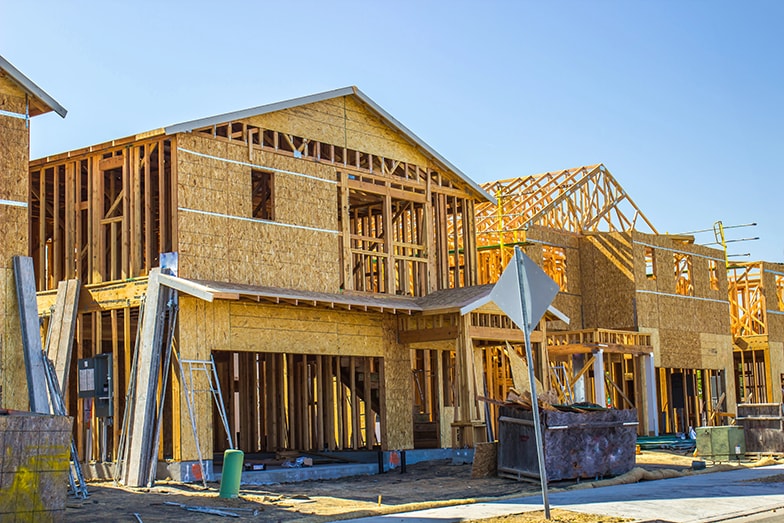By: Aram Simovonian, Lima Lee Simovonian LLP
As a general rule, a mortgagee must obtain a Writ of Possession prior to taking possession of a residential property upon default of a mortgagor. In limited and exceptional circumstances, a mortgagee may take possession without obtaining a Court-issued Writ of Possession.
The rising interest rates (among other things) have caused, and continue to cause, mortgagors to go into default. It is likely that there will be a rise in mortgagees using the self-help remedy of possession without the general practice of obtaining a Writ of Possession. This self-help remedy should be used with caution as it has the effect of ousting people from their homes without a Court Order.1
The purpose of a possession remedy is linked with the proper exercise of the power of sale conferred by the mortgage. A mortgagee will rarely take possession upon default for as long as the mortgagor has a right to redeem.2
The right of a mortgagee to take possession of a property upon default is circumscribed by the mortgage agreement, the Mortgages Act, R.S.O. 1990, c. M40 (“Mortgages Act”), and the common law. The common law imposes an umbrella requirement that possession must be taken “peaceably”.
In August 2022, the Ontario Court of Appeal provided the latest word on the definition of the term “peaceable”. In Hume v. 11534599 Canada Corp., 2022 ONCA 575 (CanLII) (“Hume”), the appellant mortgagee held a second mortgage over a residential property owned by the respondent mortgagors. The mortgage was in default, and the property suffered a fire and was consequently uninhabitable. The appellant mortgagee, without a Court-issued Writ of Possession, changed the locks and took possession of the residential property. The respondent mortgagors commenced an application to regain possession.
The application judge correctly noted that the appellant mortgagee is able to take possession of the property, in light of the respondent mortgagors’ default, but only insofar as possession is taken “peaceably”. In defining the term, the application judge relied on the criminal standard, specifically stating that “peaceable possession” means possession that is “not seriously challenged by others” and that is “unlikely to lead to violence”. Armed with this definition, the application judge found that the appellant mortgagee did not take peaceable possession of the property because the respondent mortgagors did not acquiesce to the appellant taking possession and had not vacated the property. The mortgagee appealed.
The Ontario Court of Appeal determined that the application judge erred in law by relying on the definition of “peaceable possession” in the criminal law context. Peaceable possession in the criminal law context is materially different to the mortgage enforcement context, especially in dealing with residential properties
The Court noted:
The Appeal Court made reference to, inter alia, the following cases in its analysis of “peaceable possession”.
In Lusk v. Perrin (1920), 19 O.W.N. 58 (H.C.), the mortgagor defaulted on the mortgage and left the premises. Months later, the mortgagor returned and found the mortgagee to be in possession. It was held that the mortgagee was permitted to enter peaceably into the home without a Writ of Possession where lands were vacant.
The Court also found possession to be “peaceable” in Toronto Dominion Bank v. Clarry, 2019 ONSC 5076. Here, the property was unoccupied; the heating, electricity and water were disconnected; the property was deconstructed to the wood studs; and, the property was uninhabited, uninhabitable and had been in that state for seven months. This was clear evidence for the Court to be satisfied that the general process of obtaining a Writ of Possession was unnecessary and the mortgagee may exercise the exceptional self-help remedy of taking possession.
Reference was also made by the Appeal Court to Walter Traub in Falconbridge on Mortgages:
The key terms are “occupied”, “vacant” and “abandoned”. Hume seems to say that a mortgagee cannot dispossess a mortgagor from their property when it is not abandoned and when it is occupied.
Following its review of the jurisprudence and reference to texts, the Court of Appeal noted the following:
The Appeal Court ultimately found that the mortgagee did take peaceable possession. In coming to this conclusion, it relied on the following evidence:
Hume’s conclusion was founded on exceptional facts; this is emphasized as the Court of Appeal went on to say that it is generally preferable that a mortgagee obtain a Writ of Possession before taking possession, especially in the case of residential properties. Apparently, unless exceptional circumstances exists that, prima facie, evidence abandonment of a residential property, the mortgagee must obtain a Writ of Possession.
A review of Hume, as well as the cases it cites, allows us to extract the following questions, which, we think, must be considered by mortgagees prior to using the exceptional self-help possession remedy:
The analysis relates to the circumstances of the property, and the manner in which a mortgagee takes possession.
In November 2022, the Court, in Vault Capital Inc. v. Jiaxiang Huang and Yong Shi, 2022 ONSC 6595, applied, perhaps for the first time, the law as outlined in Hume. The facts are as follows: the defendant mortgagors owned a luxury residential home and borrowed $2,860,000 from the plaintiff mortgagee. Although, at one point, the defendants lived in the home with their children, as of about May 2021, it was only Jiaxiang Huang that occupied the property. The mortgage went into default in August 2022. About three months after the default, Vault, the mortgagee, without warning, notice, or a Court-issued Writ of Possession, took possession of the residential home.
The defendants brought an urgent motion to regain possession: the only question before the Court was whether Vault, the mortgagee, took peaceable possession of the property.
The Court relied on Hume and noted that the analysis depends on the evidence and facts. Following its review, the Court made the following findings:
The Court concluded that the house is occupied, but not as a full-time residence. The Court, in its legal analysis, stated that a mortgagor has a right not to be confronted or threatened with violence, and not to be put out of his or her home in an aggressive way; in addition, the Court quoted Hume, noting that in the case of residential properties that are occupied, the requirement that possession be taken peaceable may require something more than possession being taken without violence or threat of violence.
The Court also found the following:
Vault raises a number of questions and concerns in its application of Hume.
One: if Vault had done what the Court says it should have done (i.e., gave the Defendants, or Mr. Huang, notice of its intention to take possession), could Mr. Huang have refused to give up possession of his home? Arguably, yes. If Mr. Huang refused to give possession, Vault would then not be able to take possession in a non-peaceable manner because it would include the physical removal of Mr. Huang from his property (unless it takes possession while Mr. Huang is temporarily away, like at the grocery store). In that regard, it appears that Vault, by failing to give notice of its intention to possess the property, has benefited from the use of the exceptional self-help possession remedy.
Two: does “peaceable possession” depend on the irreparable harm caused to the mortgagors? In Vault, the Court found that there is no irreparable harm to Mr. Huang by Vault’s taking of possession. This weighed in favour of the conclusion that possession was “peaceable”. This raises a question: if Mr. Huang was of modest means and had no where to relocate, would possession then not be peaceable?
Three: what role, if any, does the “risk” factor have in the “peaceable possession” analysis? In Hume, the Court of Appeal noted that the mortgagee’s investment was at “risk” – this, in turn, weighed in favour of the mortgagee obtaining possession with a Writ of Possession. It does not appear that the Court, in Vault, undertook an analysis of whether the mortgagee’s investment was at risk.
Four: The Court’s emphasis, in Vault, was on “violence” and “threat of violence”. Indeed, the Court appears to have heavily relied on Royal Trust v. 880185 Ontario Ltd., 2005 (CanLII 13910 (Ont. C.A.) where the Court noted that a mortgagor has a right not to be confronted or threatened with violence, and not to be put out of his or her home in an aggressive or oppressive way that leaves families homeless. Violence and/or threat of violence is the criminal standard – the Court in Hume held that “[a]t the minimum, taking peaceable possession means taking possession of a property without violence or the threat of violence”. In the context of mortgage enforcement, a higher standard must be used – indeed, the Appeal Court in Hume stated that the application judge “erred” in relying on the meaning of peaceable possession in the criminal law context.
Hume appears to say that peaceable possession can be taken when the property is vacant/abandoned, and unoccupied for a significant amount of time, and when the lender’s investment is at risk. The examples used by Hume deal with properties that are completely bare, abandoned, damaged by fire, and relate to situations in which mortgagors have been absent for months at a time.
Vault is different; the Court in Vault says that even with temporary occupancy and without complete vacancy/abandonment and without (it appears) any risk to the mortgagee on its investment, the mortgagee can still, without a Court-issued Writ of Possession, take possession of the property.
Vault appears to open the door (wider) for mortgagees to exercise their self-help remedy of taking possession of a property even in circumstances in which the property is not vacant, not abandoned, and is temporarily occupied.
Suffice to say, there will likely be further opportunity for the Court to apply Hume, and now, Vault, in the future.
1 A mortgagor is a borrower; a mortgagee is a lender.
2 Joseph Roach, The Canadian Law of Mortgages (3 rd.) (2018, Lexis Nexis).
3 There is jurisprudence which defines the terms “vacant” and “unoccupied”. Briefly, the term “vacant” and “abandoned” are synonymous and mean that the property is totally deprived of its contents and entirely abandoned. The term “unoccupied” means that the person(s) living at the property have permanently (not temporarily) stopped living at the property. See Shaeen v Meidian Insurance Group Inc., 2011 ONSC 1578, Lambert v Wawanesa Mutual Ins. Co., 1945 CanLII 99 (ON CA).

















